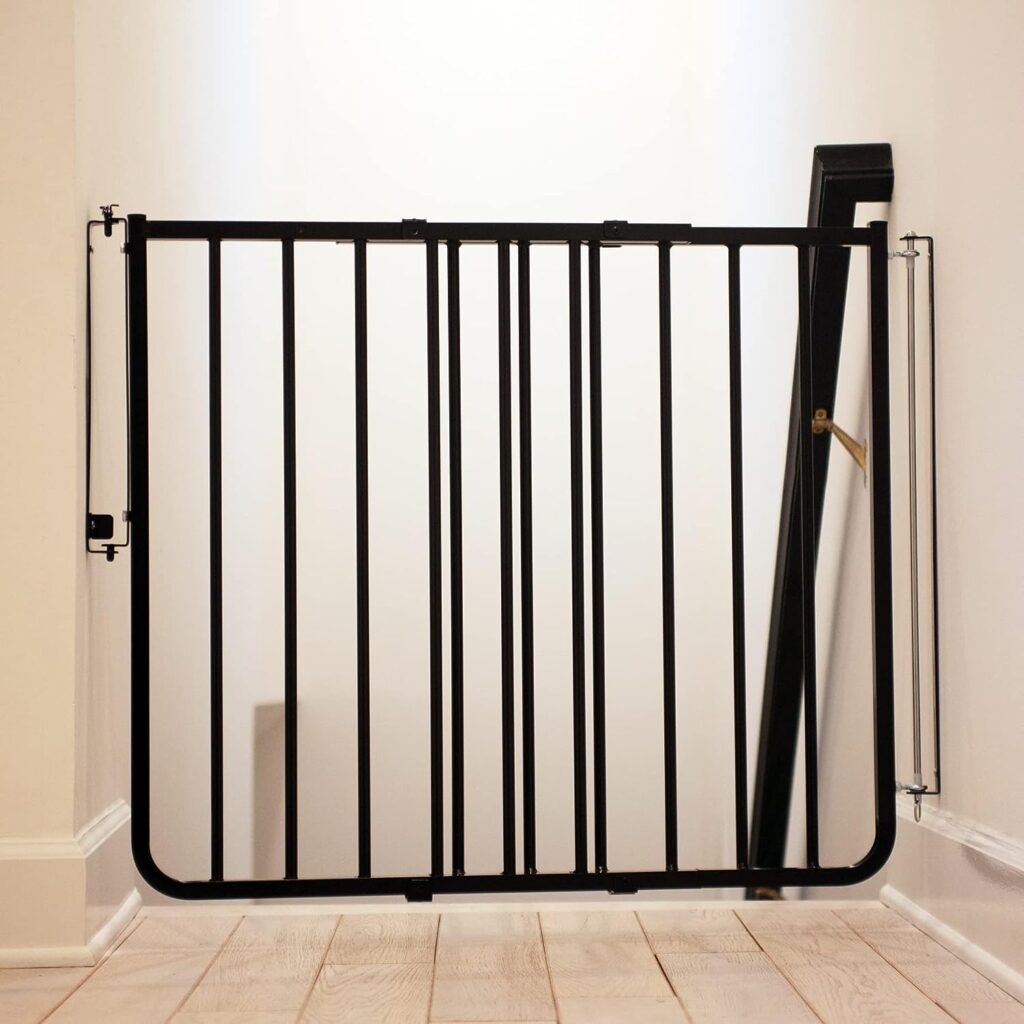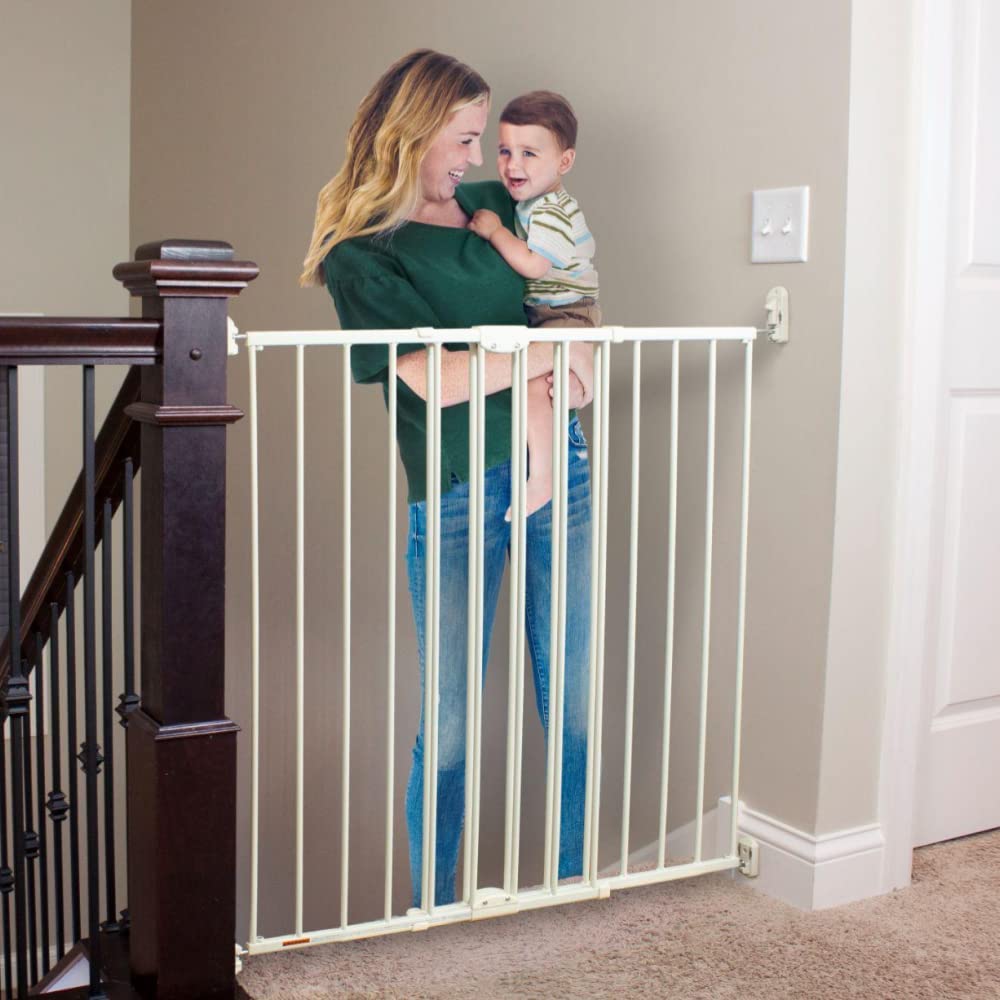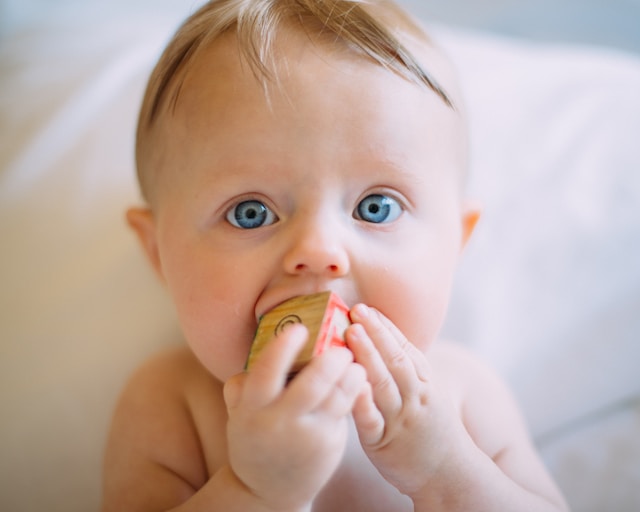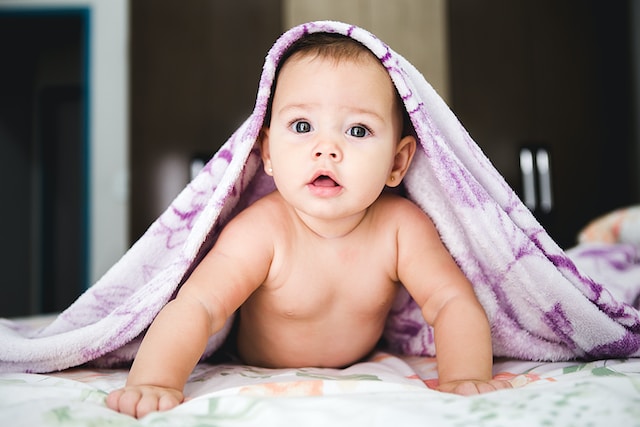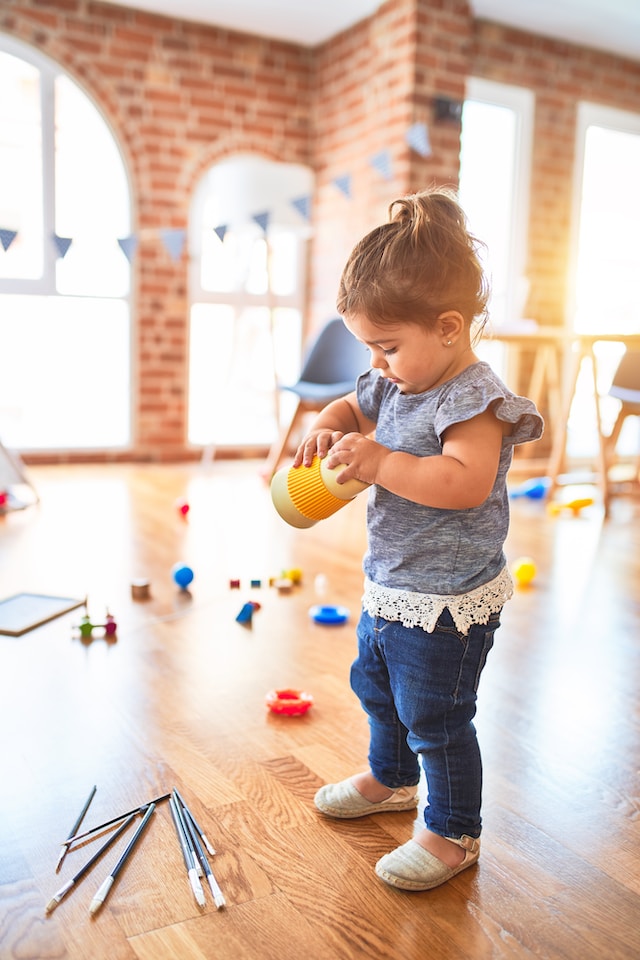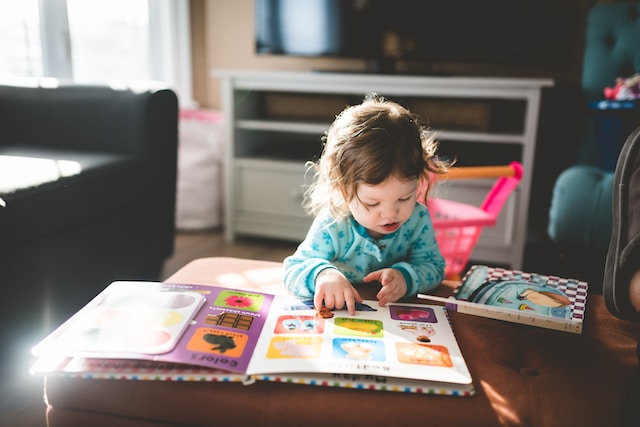You’re about to be a parent, congratulations!
Bringing a baby home is one of the most exciting things new parents experience! Along with all the excitement, though also comes worry.
Many hidden dangers face a baby, and as parents, our job is to protect them. Even before our babies are born, we love them and want to do everything in our power to protect them.
That’s where baby-proofing comes into play! The bedroom is an essential room our baby’s need to be protected in because it is where they will spend much of their time.
Our article helps navigate the waters of bedroom baby-proofing to make it easier and to answer any questions you may have.
Read on to discover the top tips on how to baby-proof your nursery.
How to Baby-Proof for Newborns
Baby-proofing for newborns is different from baby-proofing for different stages in your child’s life, and the time to start baby-proofing is before your baby is even born!
There are several things to consider when preparing your baby’s nursery for their big arrival. You have to think about the crib, bedding, baby monitor, a changing table, and countless other items.
First on your list, however, should be your baby’s crib or bassinet. Where your baby sleeps needs to be 100% baby-proofed and safe to reduce the risk of SIDS and other dangers while sleeping like suffocation or strangulation.
Every year infant deaths are reported related to sleep products placed in babies’ cribs. In 2019, the Consumer Product Safety Commission (CPSC) received reports of 73 deaths from infant inclined sleep products alone.
1. Crib Safety
When planning your baby’s crib, keep the motto “Bare is Best” in mind. Baby’s do not need a bunch of things in their cribs to sleep. And no matter how cute those blankets and stuffed animals are, they should not be in the crib as they pose a suffocation risk.
Leave out pillows, sleep wedges, sleep positioners, and bumpers as well.
You should purchase a firm crib mattress and a fitted crib sheet. Ensure that the crib sheet fits snuggly; loose sheets pose a suffocation hazard. There should be no more than two fingers width between the mattress and the edge of the crib.
Avoid buying a crib second-hand if possible, but if you do, make sure the crib meets current safety recommendations.
If the crib is more than 10 years old, don’t use it to be on the safe side. Slats that are too far apart make it possible for your baby to become stuck and possibly strangle.
Cribs should never be placed by a window with blinds, curtains, or near any devices with cords; these all pose a risk of strangulation.
You should never hang any heavy objects near your baby’s crib as the objects could fall and injure your baby. Pictures and decorations are nice, but keep them light in the nursery.
Consider using wall decals to decorate your nursery. They add a pop of color without having to hang anything or damage the walls with nails.
2. Changing Table
The construction of your changing table is key to maintaining your baby’s safety. Follow the directions carefully and test the durability and stability.
NEVER leave your child unattended on the changing table even if you think they cannot roll over or move yet!
Before you begin changing your baby’s diaper, make sure you have everything you need on the changing table. Nothing is more frustrating than realizing you are out of wipes when your baby has a big messy diaper!
By making sure you have everything ready ahead of time, you won’t be tempted to leave our baby to go and grab the missing items.
3. Do NOT Co-Sleep
Many parents love the idea of co-sleeping with their newborn in the bed, but it is very dangerous and potentially life-threatening to do so.
A recent study showed that babies have a three times higher risk of dying from SIDS when they co-sleep or bed share with parents.
Instead of bed-sharing, consider placing your baby’s bassinet next to your bed or keeping their crib in the room with you. I had my second son’s crib in the same room for almost a year!
If you feel it is essential to have your baby close, purchasing a bassinet that sidles up your bed is the safest way to go.
4. Using a Baby Monitor
Using a baby monitor is an excellent way to keep an eye on your baby when you cannot be in the room with them.
Many monitors today use multiple cameras so you can see your nursery from various angles. Some monitors even have color screens that are so clear it is like watching a mini TV screen!
5. Smoke & Carbon Monoxide Detectors
Whether or not you have children having working smoke detectors in your home is a good idea. It is recommended to have at least one smoke detector for each floor of your house. If your house is large you may wish to have more than one upstairs.
Consider placing a smoke detector on the ceiling outside your baby’s nursery.
It is also wise to have carbon monoxide detectors in your home. Sometimes they are combined with your smoke detector and other times you can purchase separate ones that simply plug into an outlet.
Carbon monoxide is colorless and odorless, although gas companies add the smell we commonly associate with gas.
How to Baby-Proof for Older Babies
Once your baby becomes mobile, the dangers in the nursery change and increase. Your little one can now climb, move around, open and close things, and get into all kinds of trouble if not adequately supervised!
There are, of course, funny stories of babies dumping baby powder all over the place or covering themselves in vaseline, but there are also tragic ones, so it is crucial to keep the nursery a safe haven for your child.
As your child grows, re-evaluate things from their perspective. Get down on their level to see what might be tempting to play with or potentially a hazard.
1. Cords
Keep anything with a cord out of your baby’s reach. This includes monitors, humidifiers, wipe warmers, bottle warmers, etc. Ideally, all cords should be bundled together and placed behind an object like a dresser.
If you hang a mobile above your child’s crib, it is time to remove it once they can sit up. Children who can sit up can pull a mobile down and potentially strangle themselves with it.
Mobiles are a great tool to help develop your child’s hand-eye coordination, eye muscle strength, and head control, so use them during playtime when your baby can be observed as a safer option than over their crib.
2. Secure Heavy Furniture
All heavy pieces of furniture should be secured to the wall with furniture straps. You may not think your little guy or gal is strong enough to topple over their dresser, but you’d be surprised.
All it takes is enough weight at the right angle, and a dresser or changing table can become a deadly object. Furniture straps can be purchased from any major retailer or baby supply store.
3. Lower Your Crib Mattress
Many parents may not realize that cribs are adjustable! So when you first assemble your newborn crib keep those directions handy.
A newborn crib will have the mattress height at the highest setting. This allows parents to comfortably pick up and put the baby down. However, once your baby can sit up, the mattress needs to be adjusted down to prevent your baby from toppling out of the crib.
4. Cabinet Locks
Keep all products out of your baby’s reach or locked away. The same types of cabinet locks that you would use for the kitchen or bathroom can be used to lock the drawers on a dresser or changing table.
Even if your baby does not ingest something harmful, they can make a terrible mess if they get into the wrong product!
Cabinet locks also keep your baby’s delicate fingers safe from pinches and other boo-boos.
5. Baby Gates
If your house is two stories a baby gate is a must. Once your baby is mobile installing a baby gate at the top and the bottom of your stairs can literally be a lifesaver!
According to WebMD one child is injured by falling down the stairs every 6 minutes. The same research states that an average of 93,000 children under the age of 5 were injured by stair injuries between 1999-2008.
As children become mobile they want to explore their environment. However, young children don’t have the same intuition for danger that older children do and that curiosity can lead to injuries.
6. Secure Windows and Blinds
If your baby’s room has a window in it, which it probably does, it is important that there are window guards in place. Window guards make it so your child can’t accidentally open the window and fall out.
There are also guards that prevent windows from accidentally closing and pinching your little one’s fingers.
How To Make Your Baby Comfortable While Sleeping
A comfortable baby not only sleeps better but keeping things “just right” like the Goldilocks story reduces the risk of SIDS (Sudden Infant Death Syndrome).
Here are some tips and tricks to ensure your baby sleeps soundly and safely, which should also provide you with some well-needed rest too!
1. Temperature
Your baby’s room should be kept at a cool temperature, under 70 degrees. If you are worried that your baby may be cold, you can use a sleep sack or use pajamas that cover their feet and arms.
Studies indicate overheating may increase the risk of SIDS.
2. Use a Pacifier
Some parents swear they will never use a pacifier, I was one of them, but after one day in the hospital and my little guy crying non-stop, I quickly changed my mind.
Experts recommend you wait until your baby is at least one month old to introduce a pacifier as it may cause nipple confusion if breastfeeding, but as a parent, you have to decide what is best for you and your baby.
Pacifiers not only help your baby learn how to self-soothe but are also assumed to reduce the risk of SIDS.
Never attach a pacifier cord to your baby’s clothing or pajamas when they sleep as they could strangle on the cord.
3. Baby on Back
Place your baby on their back to sleep. Your parents or grandparents may say that you slept fine on your stomach, but all recent research points that back is best when putting a baby to sleep.
Babies who cannot roll over yet could suffocate if placed on their sides or stomachs to sleep. Make sure that anyone caring for your child knows to place them on their back.
Once your baby knows how to roll over, around 6 months old, there is no need to flip them back if they roll over on their own.
Some Do’s and Don’ts
Do’s
- Use a baby monitor to check on your baby while sleeping
- Use a firm mattress and a fitted crib sheet
- Place your baby on their back to sleep
- Use a sleep sack to keep your baby comfortable
- Use cabinet locks
- Secure heavy furniture
Don’ts
- Do not place pillows, blankets, or stuffed animals in the crib
- Do not leave cords or strings within reach of the crib
- Do not overheat your baby with too many layers
- Do not leave your baby unattended on the changing table
- Do not place the crib by a window
FAQ
Is it safe to let your baby sleep in bed with you?
Most pediatricians and newborn experts say no. Co-sleeping increases the risks of SIDS (Sudden Infant Death Syndrome), as well as increasing the risk of suffocation. Instead, keep the baby in a bassinet or small crib in the same room.
When is it safe to use a pillow?
A baby can use a pillow around 18 months or a year and a half, but if you can wait until they are two, even better! Most children will indicate they want a pillow, or they may begin propping themselves on a stuffed animal or bunched-up blanket when they sleep.
Is it safe to use a used crib?
A used crib is typically not recommended unless you know it is less than 10 years old and you know where it is coming from. All new cribs must meet the same safety standards regardless of price. So if cost is a concern even less expensive cribs are designed with those standards in mind.
Can I use bumpers on my baby’s crib?
Just like blankets, pillows and stuffed animals, bumpers can pose a suffocation hazard for your baby. They can also trap your baby in the ties and potentially strangle them.
What type of containers are safest for toys?
Old fashioned toy chests can be hazardous to small children. Children can become trapped inside and they can also injure themselves on sharp corners or heavy lids. Soft canvas totes or woven baskets are the best option to store toys in the nursery.
Final Words
As parents, we all want to keep our babies safe and out of harm’s way. No one can guarantee that accidents won’t happen or that SIDS won’t occur.
Still, by taking precautionary steps to baby-proof the nursery and follow best practices, we can drastically reduce risks and keep our little ones as safe as possible.

